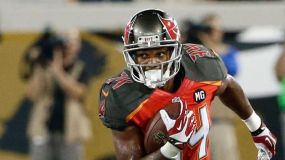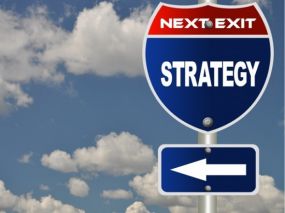Fantasy Football Podcast - 9/15/15 - Week 2 preview
With week 1 in the books, we get a little bit more of an idea how things will play out this fantasy season. We're not done with the bumps and bruises, however, not nearly! Week 2 brings with it quite a few challenges for teams unlucky enough to be hit with injuries to such players as Dez Bryant and Desean Jackson. The important thing at this stage of the season is not to panic, but rather to work the waiver wire and explore possible trades in order to have as much value on your team as possible over the next few weeks while those players are out. We discussed a few of those waiver wire pickups for week 2 and talked about guys that were overachievers or underachievers in Week 1 and whether or not those successes or disappointments would continue going forward.
(Listen to the Fantasy Football Podcast: 9/15/15, Week 2 Preview)
Remember that the best thing that you can do for yourself as a fantasy team manager is to pay attention to all of the news and stats that come out after each week. The difference between a winning and losing season can easily be one waiver wire pickup that you overlooked because you didn't have time.
Subscribe to our podcast on iTunes to get notifications whenever we release a new episode. We also broadcast the shows live at http://www.mixlr.com/drinkfive on Tuesday nights at 9pm CT. Feel free to browse over and join in the discussion in the chat room!
Kenny Stills Signs with the Miami Dolphins; Mike Wallace Dynasty Outlook Drops
Update: The Dolphins were clearly fed up with Wallace's antics even though the latest reports were saying that he was making good with Tannehill and the coaching staff in Miami. He was traded to the Minnesota Vikings in exchange for a 2015 5th round pick. The Dolphins may still try to pick up another receiver to pair with Stills and Landry like Cecil Shorts. Wallace will be used heavily on the Vikings, but his value does dip a little bit as Teddy Bridgewater is not yet playing to the level of Tannehill.
NFL Free Agency this year has been a fireworks show. I know, I know.. every year has its blockbuster trades and unforeseeable acquisitions along with players facing unexpected injuries and trouble with the law - but this off-season just seems a little more impactful already.
And it's only March 13th!
So.. is Friday the 13th of March, 2015 the day that Mike Wallace's dynasty outlook on the Dolphins hits a new low? Yes. With the signing of former Saint Kenny Stills, the Dolphins have just shown us where their future lies. And it's looking pretty good, folks.
Let's take a quick look at Kenny Stills: he's a 3rd year player (breakout, anyone?) who, along with a 78.8% catch rate, grabbed 63 balls for a combined 931 yards and 3 touchdowns. He had success in 2014 running multiple routes and was among the very best (4th, in fact) in the NFL at bringing in the football.
Granted, Stills' quarterback was Drew Brees, but Tannehill has been no slouch in his first few years as an NFL signal caller and is generally expected to continue to improve - especially with new offensive targets like Kenny Stills and a recent acquisition from the Browns, Tight End Jordan Cameron.
Back to Mike Wallace.
His numbers have been hovering around 1000 yards for his whole career and while his yardage total in 2014 (862) was disappointing compared to his previous seasons, he was able to match his career high in touchdowns (10) from back in Pittsburgh in 2010. Still, issues on the field and with coaches specifically have made the Dolphins' management rethink Wallace as their go-to receiver. Earlier in the year there were rumors swirling about Wallace being traded or facing a pay cut to stay on the team and although nothing of that sort has happened yet, he's definitely on the hot seat there.
Personally, I think the Dolphins will have Wallace and Stills both lined up on a lot of plays this year and although Stills is the future there, Wallace could keep a place on the team if he is able to take Stills under his wing and teach him how to be a play-maker. That said, Wallace will lose some down-field targets to Stills and some red-zone looks to Cameron. This is not to mention Jarvis Landry, who broke out in 2014 as a rookie with 84 receptions for 758 yards and 5 touchdowns.
What does all of this mean? Well, the Dolphins offensive outlook just shot up for the 2015 season but we'll likely see Wallace's stock plummet slightly as he becomes more a part of the team rather than a lone wolf making plays by himself out there.
AFC West Spotlight: 2015 Fantasy Outlook
The AFC West division was fairly successful in 2014, and has been topped by the Denver Broncos for the past four seasons. Will the Broncos again come out on top in the West? How will the changes in the off-season this year affect the major fantasy players from each team? Read on to find out, and click on the podcast for more insights that didn't make it to the article. Cheers!
Denver Broncos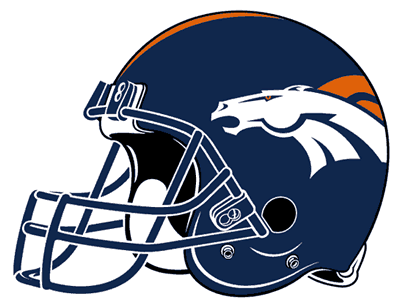
Additions:
Gary Kubiak (Coach)
Wade Phillips (Defensive Coordinator)
Owen Daniels (TE, from BAL)
Departures:
John Fox (Coach)
Julius Thomas (TE, JAX)
Jacob Tamme (TE, ATL)
What’s it all mean?
Well, the Broncos have been throwing in all their chips to try and win themselves a Super Bowl (or, “World Championship” as Elway calls it) for the past 3 years. They are led by a 39-year-old quarterback in Peyton Manning (albeit one who threw for a combined 10k yards and 94 TDs over the past 2 seasons) and are going to give the damn thing one more try, it seems. I’ve learned not to count Manning out, but he does seem to be slowing down toward the end of the season in his old age – if you’re interested in grabbing him for a fantasy league it may be best to capitalize on production early and sell him high after the halfway point in the season. Regardless, he should still end up in the top tier of QBs when the dust clears from the 2015 season, barring injury.
(Listen to the Fantasy Football Podcast, 6/23/15: AFC West Spotlight!)
Running Back is an interesting position to discuss here as some still believe that 3rd year player Montee Ball could end up back on top of the depth chart. Personally, I would not count on that as C.J. Anderson seems to have impressed enough in the 2nd half of the 2014 season that he should monopolize the touches in the backfield. Anderson’s ADP is currently about 15 in a standard league. That’s the middle of the 2nd round. Let’s look at two players currently going after him: Jeremy Hill, and Alfred Morris. Would you want either of those over Anderson? I wouldn’t. It looks like there is a steep drop-off right around there as well. Ronnie Hillman may get some scattered work throughout the season but will not be fantasy relevant unless there is a major injury or production problem with Anderson.
Demariyus Thomas is easily the #1 go-to WR target for Manning this year and his numbers should reflect that. He has been very consistent over the past few years and we should expect over 1400 yards and at least 10 TDs as a floor. His ADP is currently holding around 13, which means that he is being drafted right below Odell Beckham Jr. and Dez Bryant. Personally, I would rank him higher than Beckham simply based on the years of production consistency that we have been able to see from Thomas. Emmanuel Sanders had a career year in 2014, effectively almost doubling his receiving yards and TDs from his previous high in 2013 while playing for the Steelers. Obviously he’ll still be used a great deal in the passing game, but these seem like unsustainable numbers to me in this new offense and even Sanders recognizes that, saying “You talk about going from a no-huddle offense to an offense that is predicated off running a football then throwing it. It’s different.”
We’ve heard some good things about Cody Latimer (lining up as the 3rd wide receiver currently), but he still hasn’t really shown us the money. We could chalk some of that up to rookie jitters but he’ll likely only get one more shot to prove himself here before someone else steps up to the plate. Veteran Andre Caldwell is hanging around as well but likely won’t get much playing time unless Sanders or Thomas are out for an extended period. The situation at tight end looks pretty clear to me: newly acquired Own Daniels should immediately play a large role in the passing game and nab a few TDs in the red zone, probably showing up his 2014 stats of 527 yards and 4 TDs. I’ll conservatively estimate his production on a Peyton Manning team at 850 yards and 7 TDs, which would be career highs at both stats. Daniels is an interesting player to keep in mind since his ADP is currently around 107 – here is someone you can grab in the 10th or 11th rounds that could perform within the top 10 at his position.
San Diego Chargers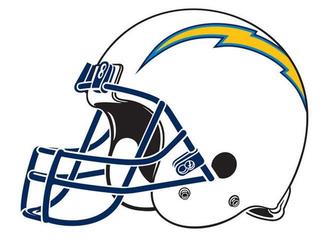
Additions:
Melvin Gordon (rookie, RB)
Stevie Johnson (WR, SF)
Departures:
Eddie Royal (WR, CHI)
Ryan Mathews (RB, PHI)
Outlook:
Outlook hazy. That’s what the magic 8-ball says when I ask it about the San Diego Chargers, anyway. Philip Rivers will probably throw for his usual 4k yards and 30 TDs, putting his value this year squarely above the Andy Dalton line as a startable QB2 that you can pick up in the 10th or 11th round of most drafts.
Keenan Allen, who had a dip in production last year, looks to bounce back this year in his 3rd NFL season. I don’t see why this couldn’t be a possibility, especially since the other targets on the team are aging veterans Malcolm Floyd and Antonio Gates. The Chargers did sign former Bills and 49ers receiver Stevie Johnson to a three-year, 10 million dollar contract and will likely use him in place of Eddie Royal in the slot and to create mismatches where possible. People may have forgotten about Johnson’s successes in 2010-2012 with Buffalo, where he was averaging over 1000 yards and 8 TDs per season over three years. Only 28-years-old, I think that Johnson could have a bounce back year here and will certainly improve over last year’s dismal performance on the 49ers (435 yards and 3 TDs).
What am I saying here? Ok.. so I think that Allen is being undervalued and should prove a valuable part of someone’s team this year – you can currently find him going in the 6th round and I would have no problem picking him up there. Stevie Johnson is going undrafted in most leagues and could very well become someone to pick up and play mid-year in PPR leagues, but since he is sitting at the WR3 position for the Chargers I wouldn’t suggest drafting him on your team – rather just keeping an eye out in case he surprises early.
Melvin Gordon is the brand new bread & butter back for the Chargers who should immediately take the reins of the running game. He is not known as a passing-down back, though, and so the newly healthy Danny Woodhead should resume his role from 2013 as the pass catcher in the backfield. I don’t expect 76 receptions again, especially since Branden Oliver was able to showcase some ability in 2014 so he may spell Woodhead slightly, but I do expect fantasy relevant production from Woodhead as a RB3 in PPR leagues.
Gates is a gamble. He just turned 35. Not a good thing for an NFL tight end. Besides that, Ladarius Green is right behind him, waiting to cut into his playing time. Gates may have some good games this year, but I’m not drafting either Gates or Green for my squads.
Kansas City Chiefs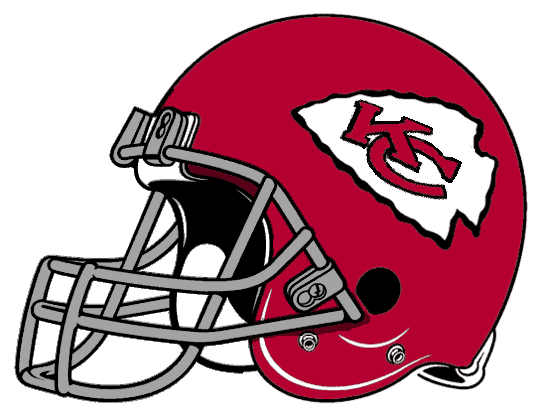
Additions:
Jeremy Maclin (WR, PHI)
Departures:
Dwayne Bowe (WR, CLE)
The Future:
All aboard the Alex Smith traaaaiiinnnn…. Yeah. That’s a train that I’m not too excited to take. He’s a consistent quarterback though, consistently mediocre. Consistently hands the football off to Jamaal Charles. Remember, in 2014 there were no wide receivers that caught a touchdown. None! And as much as we may think Dwayne Bowe has been criminally overrated for years now, Alex Smith is the reason.
Moving right along, Jeremy Maclin was acquired by the Chiefs in the off-season from the Eagles. To most, it was quite a surprise that Maclin was made available by Philadelphia but he should definitely help out the ailing Chiefs’ receiving core and maybe event tempt Alex Smith into throwing a few touchdowns, who knows? Expect statistical regression for Maclin but this may end up being a surprise for everyone involved here one way or the other. Let’s be honest, it’s more likely that Maclin ends up underperforming here with Smith under center. Too bad.
The real breakout here could be Travis Kelce. A rookie last year, Kelce built up a great rapport with Smith and ended up with over 800 yards and 5 TDs. This year should see even better stats, especially with Charles and Maclin stretching the field in several directions to pull defenders from Kelce’s routes. Kelce currently has an ADP of 53, going in the 6th round (based on all of the 6th round ADPs that we have mentioned so far, it looks like it’s filled with value at the moment) but could end up being a top 5 TE this year, easy.
Jamaal Charles has been carrying the offense of the Chiefs for a few years now, and that doesn’t look to slow down any in 2015. Not a bruising running back, Charles loves to find himself with the football in space, excelling in making the most of the yards after the catch. Because of this playing style, he may enjoy a few more years at the position than others. Nipping at his heels, though, is Knile Davis. Playing a very similar style to Charles, the Chiefs have had a lot of success with Davis when Charles was injured in 2014. They also use him to spell Charles during games. It’s clear, though, that when Charles is healthy and out on the field, Davis is relegated to backup duties exclusively. That said, Charles owners would be wise to think about scooping up Davis later in the draft if possible – I rarely ever advise going for a handcuff option during a draft but here is one that would immediately be a RB1.
Oakland Raiders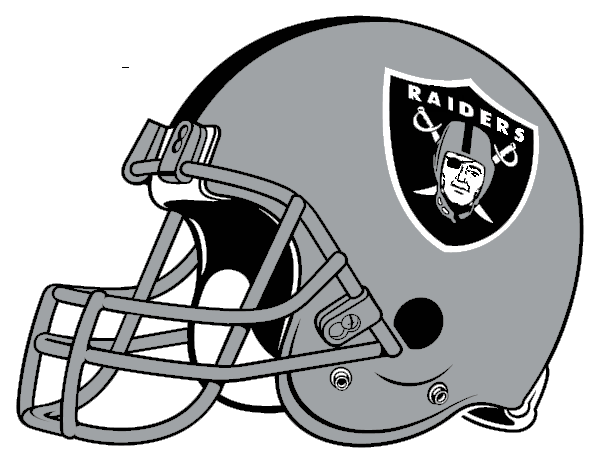
Additions:
Amari Cooper (WR, Rookie)
Roy Helu (RB, WAS)
Trent Richardson (RB, IND)
Michael Crabtree (WR, SF)
Clive Walford (TE, Rookie)
Departures:
Darren McFadden (RB, DAL)
Denarius Moore (WR, CIN)
Where is Oakland headed?
Thankfully, the answer is "in the right direction". Derek Carr performed fairly well as a rookie (3270 yards, 21 TDs, 12 INTs) and the Raiders' management has continued to rebuild the team with solid components. Most notably, Amari Cooper was drafted to be the WR of the future for the Raiders and he has been widely recognized as one of the better receiver prospects to come out of college in the past several years. We are expecting Carr to slowly improve his performance and he may end up being a franchise quarterback for the Raiders that we are talking about for the next 5-10 years.
Denarius Moore looked like he could be a breakout receiver for the team after his production increased in 2012 (posting 700+ yards and 7 TDs) from his rookie year, but after a steady decline since then and some injury concerns, he departs for Cincy. Amari Cooper was drafted to be the #1 WR here and he should step into the role without missing a beat. Most are predicting 80+ catches in his first year and we don't disagree with that assessment. Cooper should be the best receiving talent that Oakland has rostered in years. Slotting into the #2 spot is ex-49'er Michael Crabtree. Coming out of college, Crabtree was heralded as possible star but hasn't shown many glimpses of that outside of his 2012 season (1105 yards, 9 TDs). Don't expect any other receivers (Rod Streater, Andre Holmes) to produce much fantasy value outside of Cooper in 2015.
The RB situation looks promising for the first time in a few years - with the exit of aging backs Darren McFadden and Maurice Jones-Drew, a new era begins in Oakland with athletic freak Latavius Murray and complementary passing down back Roy Helu. If Murray is able to handle the load (he only averaged 3.8 yards per carry in the last 4 games of the season - his 5.2 average was due to some breakout runs in the games prior) he could easily be a top 10 running back going forward in the NFL. Helu is only relevant in deeper PPR leagues unless Murray washes out. The Raiders also picked up Trent Richardson, though likely only for depth and because he was an inexpensive commodity on the market after poor performances in the past few seasons.
Incumbent tight end Mychal Rivera and new rookie pick Clive Walford will compete for touches in this offense, but neither will be fantasy relevant outside of deep PPR leagues. In fact, these tight ends could cannibalize each other's value here because there won't be enough touches to go around after Cooper and Crabtree get theirs. We would stay away from this situation for the time being.
5 Fantasy Football Draft Strategies to Consider for 2015
Over the years, many different kinds of draft strategies have come about for fantasy football leagues - I've tried to lay out the basics below for a few of the draft strategies that I see more frequently, and posed some questions that we try to answer on the podcast. Do you have any comments or insights to add? Feel free to leave them in the comments section!
(Listen to the Fantasy Football Podcast, 8/11/15: 5 Draft Strategies to Consider)
Best Available
It may seem perfectly obvious to some, but one very serviceable strategy during drafts is simply to take the best available player at any position that is available to you at that time. The main issue people run across when using this strategy is taking too many players at the same position. Say, for example, that the best player available on the draft board for 5 rounds in a row is a wide receiver. Should you simply continue to draft the best available player and hope to make trades later to make up any discrepancies at other positions? Should you compromise or bend your initial strategy to reach for another position that you have a bigger need at?
Zero RB The prevailing strategy for a long time in Fantasy Football was to load up on RBs early. This was for a few reasons: RBs tended to be used as the focal point of the offense for a lot of teams (at least up until recently), RBs seemed to be more consistent than their WR counterparts on a week-to-week basis (at least up until recently) and there was a more severe drop off of talent at the position (since most teams had one particular RB that they fed the football. More recently, a lot of teams are favoring throwing the ball more consistently and using a RB-by-committee approach.
The prevailing strategy for a long time in Fantasy Football was to load up on RBs early. This was for a few reasons: RBs tended to be used as the focal point of the offense for a lot of teams (at least up until recently), RBs seemed to be more consistent than their WR counterparts on a week-to-week basis (at least up until recently) and there was a more severe drop off of talent at the position (since most teams had one particular RB that they fed the football. More recently, a lot of teams are favoring throwing the ball more consistently and using a RB-by-committee approach.
What does that information tell us? RBs are still an extremely valuable position for a fantasy football team, but recent changes to the game and to how the position is being used in the NFL have forced a shift toward WR value being closer to the top, or in some cases eclipsing the value of their more grounded counterparts. There are exceptions, and most of those involve either running backs that are also heavily involved in the passing game (Jamaal Charles & LeVeon Bell) or guys that still hold roles similar to those of the old days of smash mouth football (Marshawn Lynch, Adrian Peterson).
Going with the Zero RB strategy asks you to forego the conventional fantasy wisdom that RBs are the most important assets to a team, and instead draft top-tier WRs, a TE and possibly a QB before dipping into the RB pool and selecting a variety of low to middle end situational guys with upside. Proponents of this draft strategy tell us that the top few tiers of RBs in the draft have the highest variance and therefore should be avoided. In other words, instead of high-risk picks at the beginning of the draft, you should be selecting guys that can offer a consistently good performance on the field while leaving some of that associated risk behind. Does this kind of strategy make sense even when you have the 1st or 2nd pick? Does the idea of Zero RB drafting get more enticing in a PPR league when WRs receive a rankings boost?
Value Based
Value Based Drafting (VBD) is a term that has been around since the 90’s. It refers to a particular strategy: by analyzing player’s past performances and calculating projections for them, and determining what the baseline player at each position is, you can determine the value of a player (which, using this strategy, is not simply how many points a player can score but rather how many more points he scores at his position than other players at the same position.
For example, although QBs score a large amount of points in most leagues, they are not usually among the most valued picks during the draft because in general they have low relative value compared to other positions at the same draft pick. That’s not to say that a player such as Aaron Rodgers or Andrew Luck will not score more fantasy points at the end of the year than other QBs, but the difference between their points and the QB baseline will be smaller than players like Marshawn Lynch relative to the RB baseline or Antonio Brown relative to the WR baseline. The problem is that these determinations rely on projected statistics, which are only estimations even if they are based on factual data.
Taking a look at the VBD data from 2014, for example, we can see that Rob Gronkowski was 40 points higher than the next best tight end in 2014 (Jimmy Graham). This tells us that if you can’t get Gronkowski in a draft, you should wait longer to select a tight end because their relative value decreases after Gronk. The same goes with Aaron Rodgers and Andrew Luck. If unable to land one of these two QBs last year, you were better off waiting until later rounds and instead taking players at RB and WR that would be the difference needed to win games.
Guided Tour
A strategy that I see all too often but will always encourage people to avoid. Far too many times, people walk into a draft with a set strategy in their head – not a strategy based on player value or lack thereof, but with a strict plan of what positions to target and in what order. I used to do this too, when I first started playing fantasy football. I would look at the previous year’s performance, or what positions seemed to have the best players available at the top rounds and create a roadmap in my head for the rest of the draft. RB, RB, WR, WR, TE, QB.. or WR, RB, RB, WR, RB, RB, WR, etc.
It makes sense in a very shallow sense. This also applies to people that draft a starting lineup and then begin to select players for their bench. Regardless of which strategy you choose to adopt, you should never, ever have a preconceived idea of which rounds that you want to draft specific positions in. The draft itself should dictate that. Besides that, you’re more likely to succumb to picking a positional player at the end of a run if you are thinking in this way. Don’t do it!
Late-Round QB
The Late-Round, or “Zero QB” strategy has become a popular one recently as well. There are so many quarterbacks in this league that produce at a consistent level, that the drop-off after the first few is not very large. In this case, doesn’t it make sense to wait until later rounds when you get take someone like a Ryan Tannehill, Eli Manning or Philip Rivers? Those guys all have top 10 potential but at a 9th or 10th round price in a standard league.
This is a bit of an offshoot of both VBD and Zero RB strategies, as the value in picking a quarterback not named Aaron Rodgers or Andrew Luck is not deemed high enough and it makes more sense to fill those slots with players that provide more of an advantage in a match-up. Just for example, say that you’re playing against someone that took a QB in the 4th round (Drew Brees, for example). Well, instead of Brees there you could have had someone like Brandin Cooks or DeAndre Hopkins. Signing on to this particular theory is as easy as saying that you would rather have DeAndre Hopkins and Ryan Tannehill than Drew Brees and Kevin White. I would. Would you?
Tips from 'Beer4TheBeerGod' – big contributor to the /r/fantasyfootball subreddit:
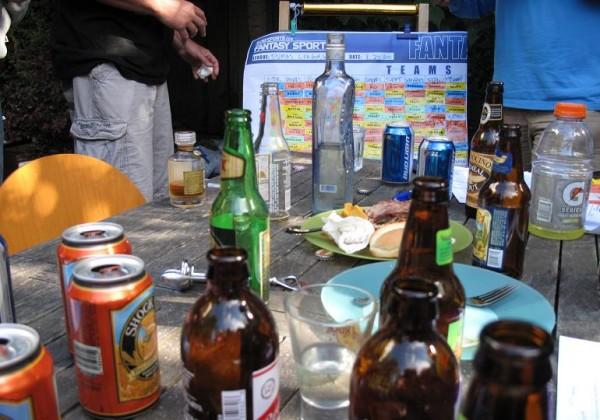 1. Know thy league. If your league uses PPR and your cheat sheet is for standard scoring you're putting yourself at a disadvantage. Know your roster requirements, number of teams, starting lineups, and all of your scoring rules. Things like 2QB, keepers, superflex (which is a nice way of saying 2QB with the option to fail), big play scoring, and six point passing touchdowns can dramatically alter how you draft. You should also know your opponents and their tendencies. Is one player a massive homer? Consider how that will affect his draft strategy. Does your league tend to draft QBs super early? Exploit that by picking up valuable skill positions and going with a streaming QB approach. This also applies to whatever sources your opponents use to draft, such as the default rankings.
1. Know thy league. If your league uses PPR and your cheat sheet is for standard scoring you're putting yourself at a disadvantage. Know your roster requirements, number of teams, starting lineups, and all of your scoring rules. Things like 2QB, keepers, superflex (which is a nice way of saying 2QB with the option to fail), big play scoring, and six point passing touchdowns can dramatically alter how you draft. You should also know your opponents and their tendencies. Is one player a massive homer? Consider how that will affect his draft strategy. Does your league tend to draft QBs super early? Exploit that by picking up valuable skill positions and going with a streaming QB approach. This also applies to whatever sources your opponents use to draft, such as the default rankings.
2. The level of risk you are willing to take should correlate with the round of the draft. Your early picks are not for flyers, they're for reliable sources of points that can form the core of your team. I've come to be very risk averse in my early picks, mostly because of the damage done by drafting guys like Darren McFadden or Toby Gerhart. Look at the history of your player and any disruptive factors (age, usage, coaching change, team change) that could increase the uncertainty of the prediction. I'm also not a fan of taking rookies in early rounds for this reason.
3. Know the opportunity cost of your draft choices. Opportunity cost is the essentially the price you pay for the road not travelled. In fantasy terms it's the value of the players you won't draft because of your choice, either because your positional need is decreased or because someone else will draft them. This is one of the core philosophies behind value based drafting, but it's more than just points. It requires you to not only know how you will draft, but ideally also your opponents. Will you drafting player X force your opponent to draft player Y, or will that guy still be around on your next turn? The greatest feeling in the world is when you make your pick and someone after you cries out in anguish.
4. Develop your own tools for draft day and practice with them. I started making BeerSheets because I wanted something I could print out, bring with me wherever I went, and know that I could follow it to create my team. It needed to be fast, easy to read, and provide enough information to make the right decision without overwhelming you with data. Some drafts let you bring computers, others are just yourself and your mind. Whatever the rules, make sure you have the tools available so that you can stay on top of the draft order and always get the most value.
5. Tiers are superior to rankings. There is no way to predict that player X will do better than player Y with enough fidelity to rank them before the season starts. This is why I'm such a fan of using tiers to determine the relative projections of players. Realistically if two players are ranked right next to each other then there probably isn't enough of a difference to matter and you should be considering other qualities such as historic performance, opportunity, injury risk, competition, and upside.
6. Don't be a homer, but it's okay to have multiple guys on the same team. Aside from bye weeks it's not that big of a deal. What you don't want to do is be predictable enough for someone else to exploit your tendencies. The other side of this is drafting players from your team's rival. Can you stomach having someone you hate on your team? If the value is there consider swallowing your pride. Moral victories are for losers.
7. Don't be afraid to reach. The best experts in Fantasy Football average a 60% accuracy. Remember that the numbers are just guesses, and if you have a gut feeling there's nothing wrong with going with it. In the end it's your team and you should be happy with it.
8. The less predictable a position, the later that position should be drafted. This means drafting kickers and DSTs very late unless your scoring rules are weird enough to require a special strategy. Unless your draft rules require that you fill out your roster then don't bother getting a kicker. Use that last pick on a total flyer and see if anything changes leading up to Week 1. Just don't forget to pick up a kicker off the WW before your first game.
9. The maximum value you will get for your trade bait is the draft pick you just wasted, so don't even bother. Some people exercise a strategy of picking someone up with the express purpose of trading them immediately. Remember, the four QBs you cleverly picked up even though you didn't need them were passed over by everyone else. You just sacrificed a team need for a lottery ticket that isn't likely to pay off. This is a particularly egregious mistake in the top half of the draft. This is different from drafting a late round flyer and hoping they turn out to be a sleeper, which is sound draft strategy.
10. You can lose your league in the draft, but you win it in the waiver wire. No matter how well or poorly you draft, that's only a part of the game. Once the draft is done the real game begins. Follow the waiver wire religiously, and don't be afraid to drop your late round scrubs for something more promising if you get more information. I'm less enthusiastic about preseason trades unless you have access to new information or you're fleecing a homer.
11. Mock until you can draft in your sleep. Mock drafting is a fantastic resource. Not only is it fairly fun, but it also helps you see how players will be taken and understand trends. If you can get to the point where you can instantly see a reach or a steal then when the real draft happens you'll be far more prepared.
Recent Articles
-
NFL Confidence Pool Picks & Strategy 2024 - Week 18
 To say this has been a year of uncertainty is an understatement. So many injuries, coaching changes, player issues shaped…in Fantasy Football / NFL
To say this has been a year of uncertainty is an understatement. So many injuries, coaching changes, player issues shaped…in Fantasy Football / NFL -
NFL Confidence Pool Picks & Strategy 2024 - Week 17
 Christmas is indeed the time of giving. And this year, the NFL is giving us a double-header on Christmas Day…in Fantasy Football / NFL
Christmas is indeed the time of giving. And this year, the NFL is giving us a double-header on Christmas Day…in Fantasy Football / NFL -
NFL Confidence Pool Picks & Strategy 2024 - Week 16
 Normally, being just a few weeks away from the end of the season, playoff positions are solidified and we need…in Fantasy Football / NFL
Normally, being just a few weeks away from the end of the season, playoff positions are solidified and we need…in Fantasy Football / NFL -
NFL Confidence Pool Picks & Strategy 2024 - Week 15
 Finally! They’re done! We are heading into week 15 and FINALLY we are done with bye weeks! 16 games a…in Fantasy Football / NFL
Finally! They’re done! We are heading into week 15 and FINALLY we are done with bye weeks! 16 games a…in Fantasy Football / NFL
 Please wait...
Please wait...